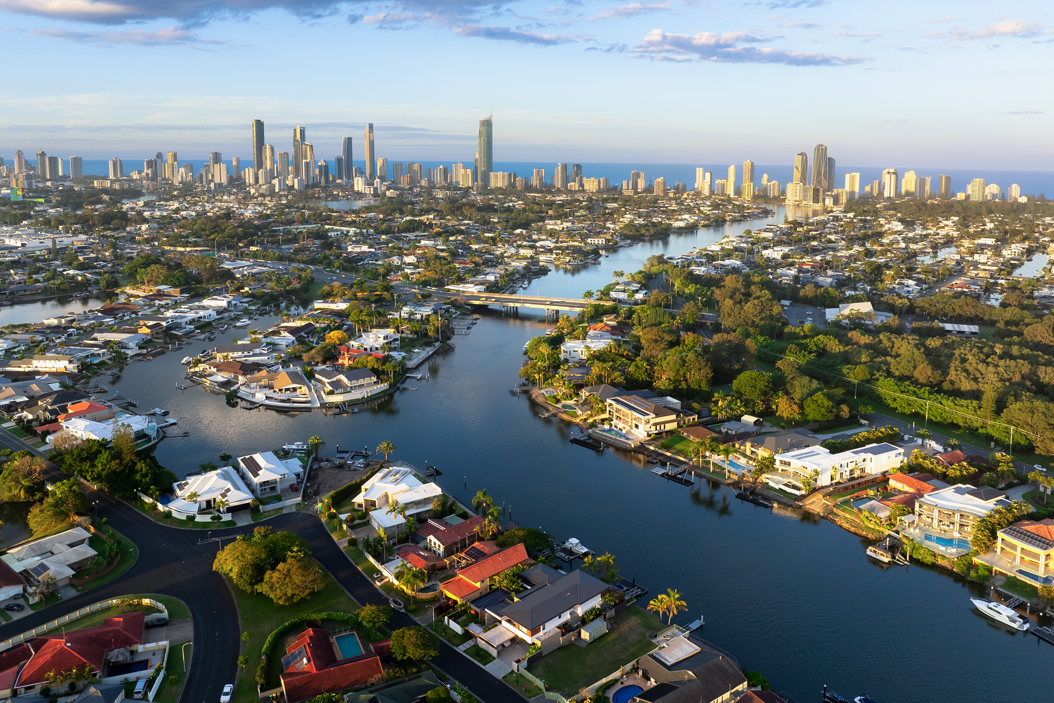Ten Trends Shaping Real Estate Right Now
October 4 2024

October 4 2024

Trend One
Real estate trends show rising prices as stock for sale declines and demand remains high. With only three months of supply available, prices are rising once more, despite a dip in 2023 due to higher interest rates. Long term, Australian dwelling values have surged, and cycles are shortening. The Gold Coast is projected to experience a 5-8% increase in dwelling values and an 8-15% rise in rents over the next 12-18 months, driven by local conditions and broader economic factors.
Trend Two
Australia’s population growth has surged to 650,000 per year, primarily fueled by migration and international students. The federal cap on overseas students aims to stabilise this growth. Over the next decade, Australia will need around two million new dwellings. The Gold Coast, as a major urban and tourist hub, is poised to benefit significantly from this population growth.

Trend Three
Australia ranks second globally, after the UAE, in attracting millionaires. While Sydney and Melbourne remain popular, the Gold Coast attracts 10-15% of these high-net-worth individuals each year. It offers exceptional value, larger properties, and lifestyle benefits. Although there was a dip during the pandemic, interest from overseas buyers in Australian real estate is now rebounding.
Trend Four
Queensland, along with Western Australia, is one of the few regions experiencing positive net interstate migration, with Queensland leading by a 3-to-1 ratio. Overseas buyers mainly come from Hong Kong, Singapore, and other regions. While Gold Coast housing prices are currently 14% lower than Sydney’s, historical trends suggest that Gold Coast property prices may soon match or even surpass those of Sydney, especially with the 2032 Olympics and infrastructure developments on the horizon.

Trend Five
Australia has needed around 187,000 new dwellings annually over the past decade, but completions have fallen short at 172,000. This has led to an undersupply, with the market previously in equilibrium from 2015-2019. COVID-19 led to a temporary overbuild, but rising construction costs and builder bankruptcies quickly followed. Current undersupply, exacerbated by a population surge, is driving up housing prices and rents.
Trend Six
Nearly 50% of developers cite rising construction costs and labour shortages as barriers to new projects, not interest rates or credit. Building costs for a standard four-bedroom house now average $550,000 and have nearly doubled in the past decade. Annual increases in building costs are currently around 6.7%, a reduction from the recent peaks, but these costs continue to affect housing affordability.
Trend Seven
Australia’s housing market is shifting toward detached houses, now making up 62% of new completions. The proportion of new apartment completions has dropped to 23%, with significant regional variations, such as 64% in Canberra compared to just 17% in Queensland and Victoria. High costs, a shortage of top-tier builders, and significant infrastructure commitments are limiting new apartment supply, particularly on the Gold Coast.

Trend Eight
On the Gold Coast, new dwellings are expanding to an average of 282m² despite shrinking allotments elsewhere in Australia. This paradox highlights a growing demand for space. With rising vehicle ownership – 842 cars per 1,000 people in Queensland – ample car parking remains crucial in new apartment developments, highlighting the region’s high dependency on vehicles.
Trend Nine
In Australia, new home loans for existing properties dominate at 77%, while loans for new housing are lagging significantly. With just 124,500 new home loans for housing construction last year, compared to the annual requirement of 187,000, the supply is some 35% behind demand. The average new loan size is now approaching $650,000.
Trend Ten
Interest rates will likely fall as job growth slows and unemployment rises, projected to hit 5% by mid-2025. The majority of new jobs have been created in government sectors, putting pressure on small businesses. Underemployment is increasing, now at 6.5%. Given these trends and market expectations, a reduction in interest rates is anticipated in the near future.
Be the first to receive new K Property Insights reports direct to your inbox.